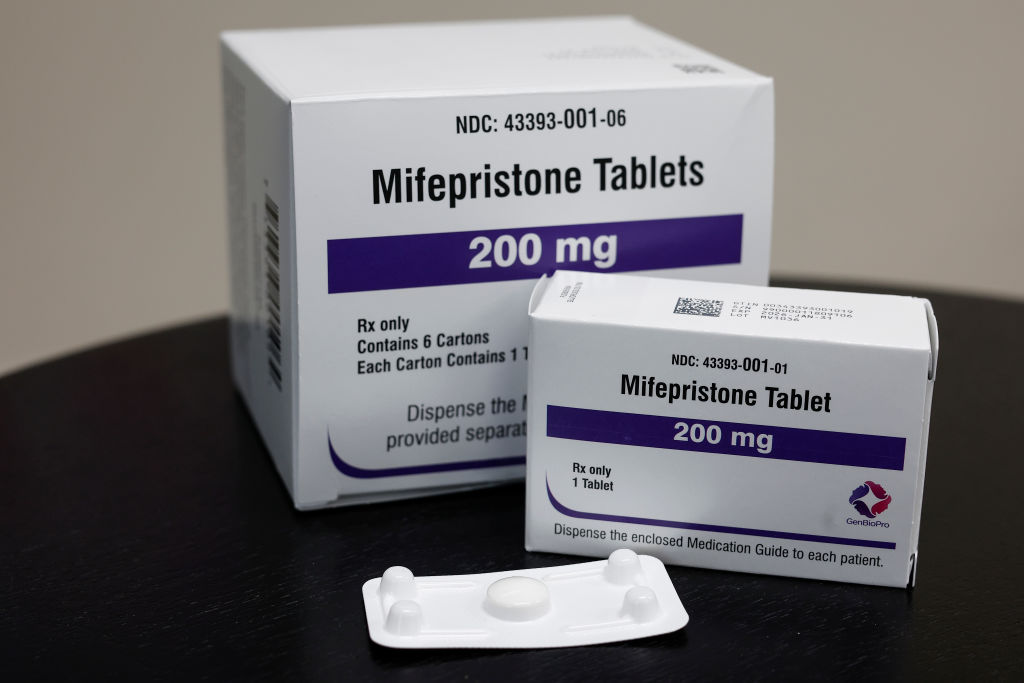Medication abortion is used in 63 percent of abortions in the United States and is approved for use in nearly 100 countries around the world. The scientific evidence overwhelmingly backs the safety of the drug.
By Terry M. McGovern and Ayman El-Mohandes | Updated March 25, 2024, 2:45 a.m.
A politicized Supreme Court disregarded science and evidence by overturning Roe v. Wade, so there is cause for concern that after hearing oral arguments on March 26 in Food and Drug Administration v. Alliance for Hippocratic Medicine, the court will stray further from established law and rule that the FDA’s authority to approve mifepristone, a drug used in medication-induced abortions, does not take precedence over restrictive state laws.
If the court decides to overturn the FDA’s preemptive authority to regulate drugs, access to mifepristone would be limited, blocking its use in telehealth and distribution in pharmacies, even in states where abortion is legal. The ruling would also weaken the FDA’s authority to regulate a wide range of drugs. And as we saw in the aftermath of the Dobbs ruling overturning Roe v. Wade, many more women, girls, and pregnant people will be harmed.
Those forced to carry an unwanted pregnancy to term often suffer devastating mental health, physical health, and economic consequences. Restricting abortion access increases pregnancy-related deaths, especially for Black women, for whom maternal mortality rates are already high. And forced pregnancies place women and girls who experience violence at further risk.
Access to reproductive health care has been severely limited in the last few years due to the overturning of Roe, COVID-related closings of reproductive health clinics, and especially after the chaos of the Trump administration’s domestic gag rule imposing a prohibition on abortion referrals, coercive counseling standards for pregnant patients, and unnecessary requirements for the physical and financial separation of Title X-funded family planning services from a range of abortion-related activities services.
For these reasons and others related to safety, access, and choice, medication abortion is used in 63 percent of abortions in the United States and is approved for use in nearly 100 countries around the world. The scientific evidence overwhelmingly backs the safety of the drug: Major adverse events occur in less than 1 percent of patients and the risk of death is almost nonexistent. Over the past two decades, more than 3 million women have received mifepristone, and there are over 25 studies and thousands of testimonies confirming its safety. Mifepristone has proven to be safer than Tylenol and Viagra.
By challenging the FDA’s authority and scientific judgment, plaintiffs seek to overturn the federal government’s overarching authority to approve and regulate medications. The structure and history of the Federal Food, Drug, and Cosmetic Act support the view that Congress intended the law to create a nationally uniform market for prescription drugs. Industry sought federal regulation of food and drugs because, in the early 20th-century, inconsistencies in applicable state laws made operating on a national scale increasingly difficult. The modern drug approval structure — wherein drug manufacturers must conduct time-consuming, expensive clinical trials to demonstrate safety and effectiveness sufficient to obtain FDA approval — is premised on the promise of a national market being available to those manufacturers who do prove their drug safe and effective.
While states may adopt some laws and regulations that supplement federal rules on drugs and regulate the practice of medicine within their jurisdiction, states cannot impose policies that interfere with or contradict FDA standards or requirements, so they cannot ban or drastically restrict a medication the federal government has approved. This would destabilize the drug and biotech industries, which rely on the FDA’s scientific assessment.
Since approving mifepristone in 2000, the FDA has subjected mifepristone to more scrutiny and regulation than most other prescription drugs. A mountain of research and consensus by professional medical associations, such as the American College of Obstetricians and Gynecologists, led to the 2016 amendment in which the FDA approved a revised indication for mifepristone, extending its approved use from up to 7 weeks of pregnancy to up to 10 weeks of pregnancy. While reviewing the data provided to support the expanded use — including clinical trials, observational studies, and systematic reviews — the FDA also conducted a review and authorized several changes including expanding the requirement that mifepristone be dispensed by a physician to include nonphysician health care providers. The FDA subsequently announced in December 2021 that it will no longer require that the drug be dispensed in-person through clinics, medical offices, and hospitals.
Nonetheless, numerous states’ laws control mifepristone’s prescription and dispensing much more strictly than the FDA. These laws directly conflict with the FDA’s safety decisions. Congress created the FDA’s national drug review system with a purpose of establishing national uniformity. SCOTUS has previously said that a drug manufacturer should not have to stop selling its product in a state to comply with both federal and state laws. The court should uphold the FDA’s authority in this matter.
Terry M. McGovern is the senior associate dean for academic and student affairs in the City University of New York Graduate School of Public Health and Health Policy. Ayman El-Mohandes, a pediatrician and epidemiologist, is the dean of CUNY SPH.




